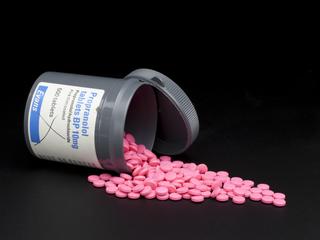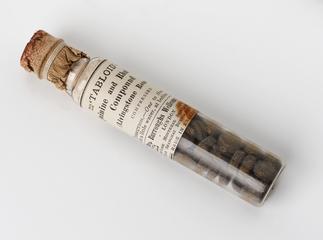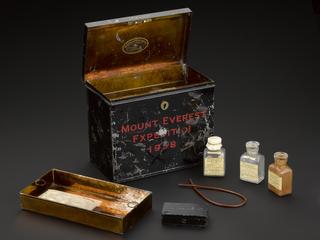Bottle for 'Soda Mint' containing phials of hypodermic tablets
Glass bottle originally for Tabloid 'Soda Mint' containing 5 small phials of hypodermic tablets (cocaine hydrochloride, hyoscine hydrobromide, morphine sulphate, strychnine sulphate and digitalin). 80 mm x 20 mm diameter, 13 g. By Burroughs Wellcome and Co., English, 1900-1919.
- Measurements:
-
overall: 80 mm 20 mm, 13g
- Materials:
- complete , glass , morphine sulphate , cork , cocaine hydrochloride , strychnine , hyoscine and digitalin
- Object Number:
- A700027/1









